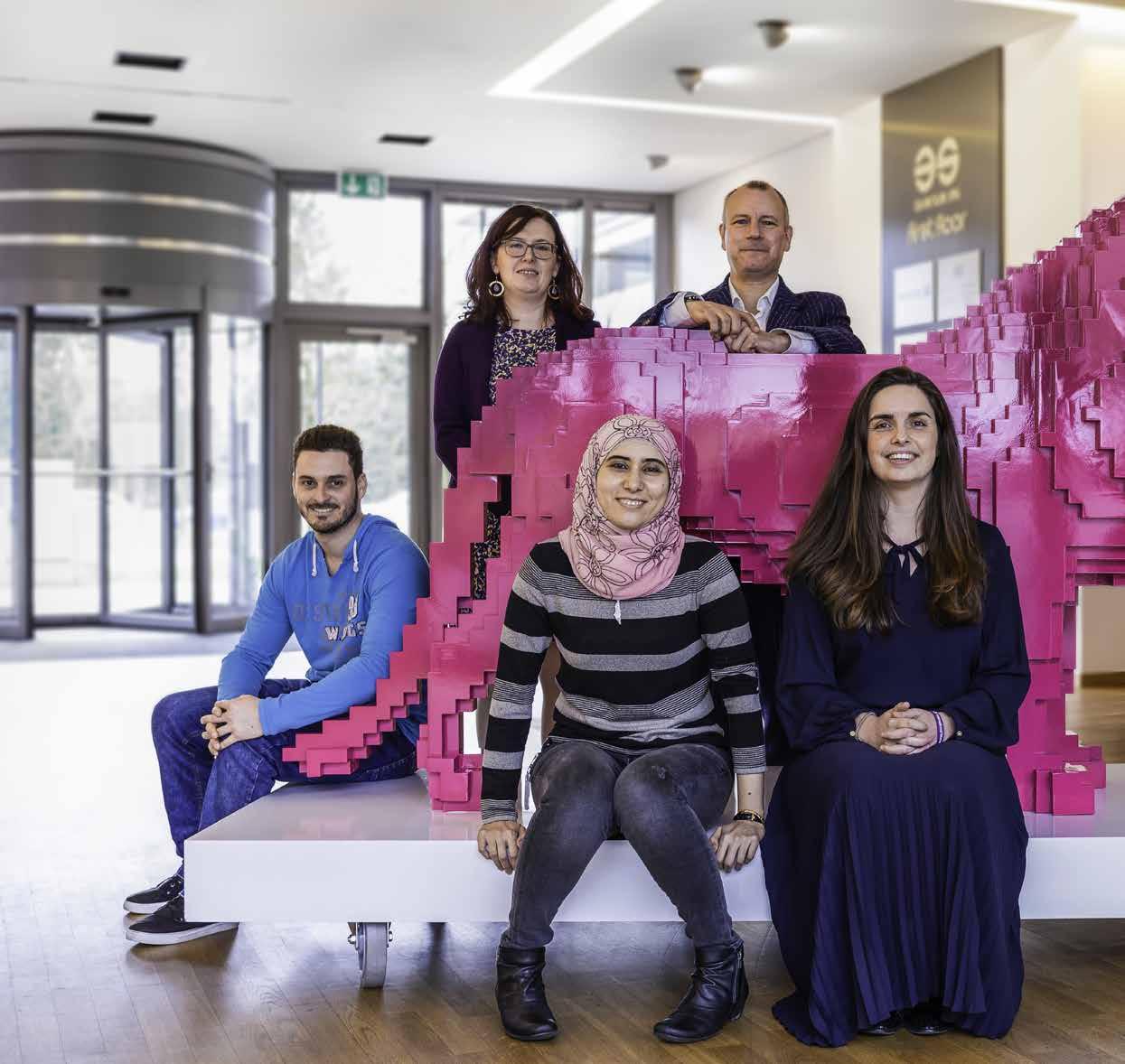Research Unleashed
Laying the Foundations for Smart Factories In 1989, Star Trek: The Next Generation introduced the world to one of the greatest sci-fi villains of all time: the Borg Collective. A species of cyborgs with a collective intelligence, their technology was capable of automatic adaptation, update, and repair. They were nearly invincible – what could possibly stand in the way of machines that can repair themselves? Their advanced technology seemed beyond human capacity. Now that is starting to change. Today, 30 years after the pop-culture debut of self-repairing machines, Paul-Lou Benedick, Julien Polge, and Dr Jérémy Robert, right here at SnT, are working on technologies that would easily fit-in on those formidable Borg ships. “Getting the factory configured in such a way that it can repair itself is our hope for the future,” project leader Dr Jérémy Robert explained. Their project partner, industry-leading parts manufacturer Cebi, called on Robert and his team to help get their complex factories ready for industry 4.0. Together, they envision a future where their factories can identify and resolve malfunctions independently (much like the Borg). These factories of the future will be robust and flexible. They will produce a wider variety of products, with minimal waste and improved quality. The road to self-repair is a two-pronged process, explained Robert. “First we need to develop a method for compiling data from separate machines into a single intelligent overview, and then we need to improve our understanding of the root causes of factory downtime.” To tackle these challenges, the team uses an interdisciplinary approach, examining both networking and machine-learning solutions. “I was surprised that some of the machines didn’t have built-in ports to interface with,” said doctoral researcher Paul-Lou Benedick, describing his part of the project to get all the machines successfully networked. “We are finding ways to connect all the machines and to get them speaking the same language. Once we have that, we can develop an AI to analyse factory data and make suggestions for optimisation.” The stakes for that first half of the project are high. Network quality could have a big impact on their final AI results. “If network quality impacts data quality, which I believe is the case,” Benedick continued, “then the AI running on a poor network could act on wrong data. We could end up with a situation where everything might look good from the operator’s dashboard, but the situation on the ground could be very different. So we need to create the best network possible. That’s the foundation we will build on.” Building on that strong foundation is doctoral researcher Julien Polge, whose machine-learning algorithms will ultimately replace the hard-coded programs currently running on many factory machines. “The first step was to identify which
Jérémy Robert, Julien Polge and Paul-Lou Benedick are collaborating with Cebi to prepare factories for the future.
types of machine-learning solutions will have the greatest impact,” Polge explained. With dozens of fundamentally different machine-learning approaches to choose from, the task was far from trivial. “I found that the hypothetically best offthe-shelf machine-learning solution didn’t yield the best results under real-world conditions,” Polge said. To solve the problem, he has begun adapting off-the-shelf solutions for real-world factory conditions. “The solutions need to accommodate shifting environmental conditions and ensure a robust, automated manufacturing process,” said Polge. To achieve this, he will introduce data preprocessing that will account for the factory’s continually changing environment. “Preprocessing will help make machine-learning solutions more effective under real-world conditions,” Polge continued. After that, he will add sensors to the machines and the factory floor. “These sensors will provide some additional contextual data that will help improve the performance of the machine-learning solutions.” Ultimately, Polge’s solutions will allow the factory to manufacture more products flexibly and will reduce factory downtime by helping operators respond rapidly to malfunction or error. Flexible-yet-rapid parts manufacturing will revolutionise the way our supply chains work – and factories that can self-correct will keep these increasingly complex environments running smoothly. What could possibly stand in the way of an economy that runs like that? •
17














